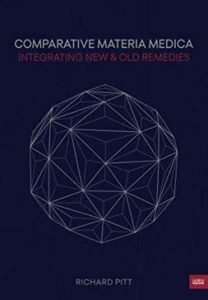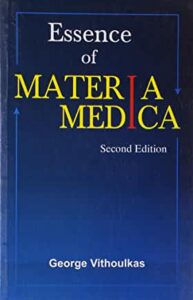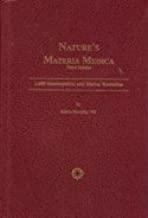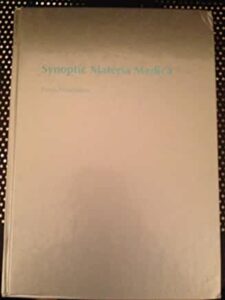Homeopathic Materia Medica Review
Dear Friends,
I have been practicing homeopathy for a long time. The difference between me as a prescriber now, and me as a prescriber 10, 20 or 30 years ago is that I am more relaxed. Let’s say that I have mellowed with age. Maybe you can even say I have developed a better sense of humor, a more gentle approach toward myself and my clients. I have released the pressure valve that made me feel I had to deliver a healing result in a limited time.
All good things take time. All good things take attention. You can’t rush a rose to bloom faster, or a tomato to ripen on the vine before its time, nor a house to be built before the infrastructure and foundation are erected properly. Everything in good order.
This goes with the process of helping people heal as well. It takes time, it takes love, it takes patience, it takes observing the unfolding of the patient’s process, and following the lead shoot that guides us to know what needs attention next. It is such a joy to watch people unfold in their healing, to see people improve their lives, their lifestyles, their decisions, and improve their health with the assistance of the homeopathic remedy as a gentle fulcrum.
Now that I am in my elder years, I am free from the pressures of raising small children, and preparing meals for a family. I have more time to do what I feel is important. At almost the pinnacle of that list is studying homeopathic materia medica. I do this everyday following my morning meditation, walk and exercise. This way I keep on learning. I keep on deepening my understanding of remedies and their therapeutic properties, so that I can be a better homeopath.
I have had the great good fortune to have studied from some wonderful materia medicas over the last few years. Each one gives a different perspective on the remedies and on homeopathy. The ones I have particularly enjoyed this year are:

Comparative Materia Medica by Richard Pitt
Comparative Materia Medica Integrating New and Old Remedies by Richard Pitt. I love this book, because Richard begins the material media with an Idea category, in which he says, “My survival depends on…..for each remedy. These are extremely insightful. This is followed by keynotes of the remedy, a description of the intrinsic state of the remedy, a description of the compensated state of the remedy, a description of the decompensated state of the remedy, and then the progression. Then he talks about the themes of the remedy, and compares the remedy to other remedies with a similar theme, but shows how it presents differently in different remedies. In studying one remedy, Richard Pitt compares it with many other remedies, so your understanding grows exponentially. The book is a wonderful quick reference guide, as well as a deep study guide. I cannot recommend this materia medica highly enough. Richard Pitt, you did a fabulous job.

Essence of Materia Medica by George Vithoulkas
Essence of Materia Medica Second Edition by George Vithoulkas. This is a very short material media, but it is absolutely full of gems. George Vithoulkas is really the father of modern homeopathy. He definitely carries the torch of classical homeopathy and its ideals. Our debt to George Vithoulkas for not compromising the ideals of classical homeopathy, and teaching the understanding of how to prescribe, how to understand remedy response, and how healing unfolds is enormous, In this little book George Vithoulkas explains how people in different stages along the way going from the healthier to deeper stages of pathology present within a given remedy. For instance in the earlier stages of the illness, the symptoms will appear more on the physical level. You may see more of the keynote symptoms of the remedy. As the illness develops further there may be fewer physical symptoms, but more mental emotional disturbances. The keynote symptoms may not show as strongly. In the deepest stages the mental pathology will be the strongest, and you may have fewer physical guiding symptoms to lead to the remedy. This helps the prescriber understand their clients at the different stages of their illness, and helps to identify the remedy with greater confidence.

Nature’s Materia Medica by Dr. Robin Murphy
Nature’s Materia Medica Fourth Edition by Robin Murphy, ND. What can be said about Robin Murphy, who passed away this last year, except what a treasure of a human being. This was a man with an encyclopedic mind, as well as an unprejudiced mind. Robin Murphy was not only a gift to homeopathy, but also a gift to herbal medicine from all traditions. He just synthesized everything. What unbelievable mental energy. It is to the credit of homeopathy that it has had the great honor of attracting people of such caliber. We have quite a few such wonderful people at work devoting their lives to developing the science of homeopathy. I have spent a lot of time the last two years studying Robin Murphy’s Nature’s Materia Medica, as well as his Herbal Wellness Guide and his Superfood Wellness Guide. The format of the material media presentation is the same in all three. They contain the traditional sections that you will find in Boericke’s material medica and others, but he also has a pharmacy section, clinical section, herbal section, homeopathy section, causation, constitution, and comments. This book is a necessary resource.

Children’s Homeopathic Materia Medica by Roberto Petrucci
Children Homeopathic Materia Medica with Repertorial Symptoms by Roberto Petrucci. This is a materia media that I fell in love with a number of years ago. This book is formatted in a very unique way. Roberto gives a wonderful intro for each remedy, which is an amazing reference. From there he has different sections, especially for the polycrest remedies as follows: History: personal and family; Development; Dentition; Vaccination; Nursing; Infectious Diseases; Mind, Relationships, School, Non-verbal symptoms, Physical symptoms and pathologies, and Surgical Symptoms.
There are many other material medical that I love, such as:

Homeopathic Drug Pictures by Margaret Tyler
Homeopathic Drug Pictures by Margaret Tyler. This book is a must for every homeopath. What Margaret does is pull together the gems about the remedies from other materia medicas that preceded hers, such as Nash’s Leaders, Kent’s Homeopathic Lectures and others. To that she adds her charm, as well as her wonderful clinical experience.

Synoptic Materia Medica by Frans Verneulen
Synoptic Materia Medica Volumes 1 and 2 by Frans Vermeulen. Frans went on to update these materia medical in subsequent years, but I love the simplicity and quick referencability of these earlier works.
Conclusion:
Homeopathy is beautiful medicine. People who somehow stumble upon this beautiful therapeutic science and who have the openness of mind to investigate it are few and far between. I am so blessed as a practitioner to have the joy of making friends with these wonderful open minded people. This is the greatest blessing of my life.
Wishing you health and happiness,
Deborah Olenev CCH RSHom (NA)